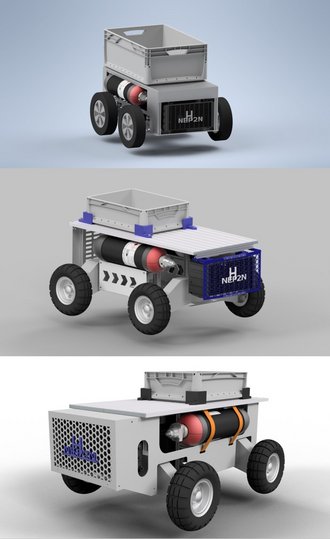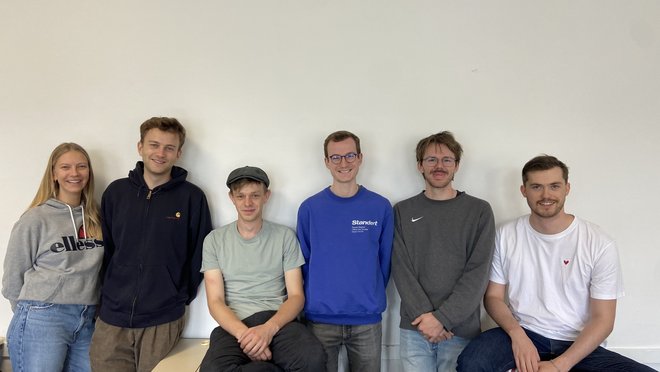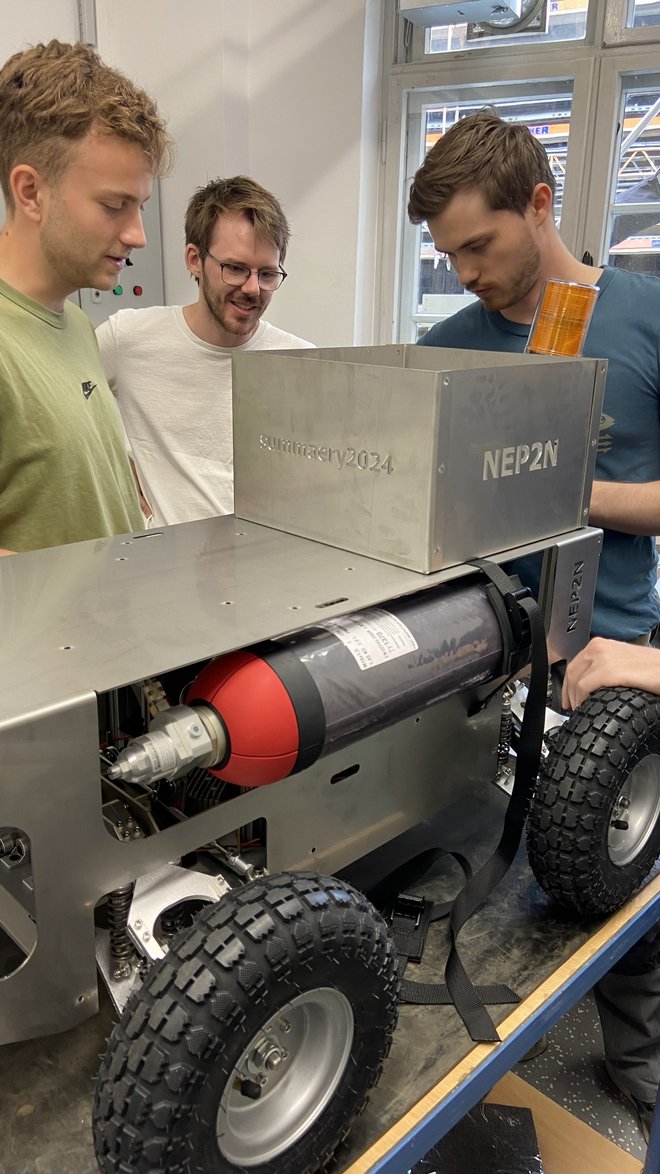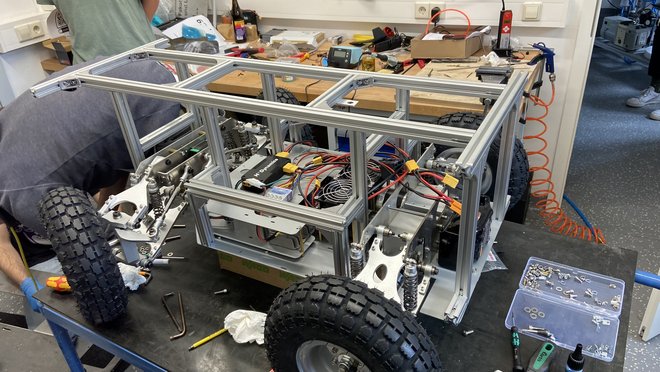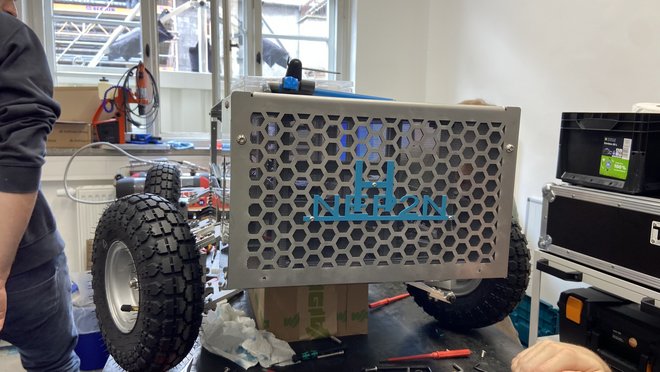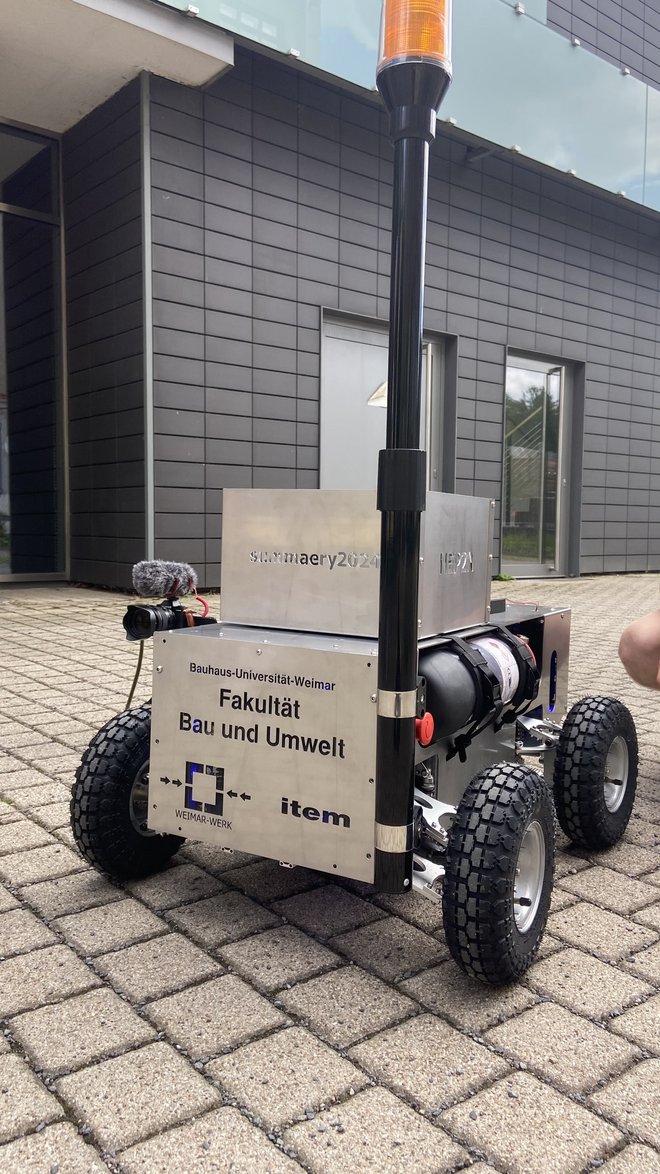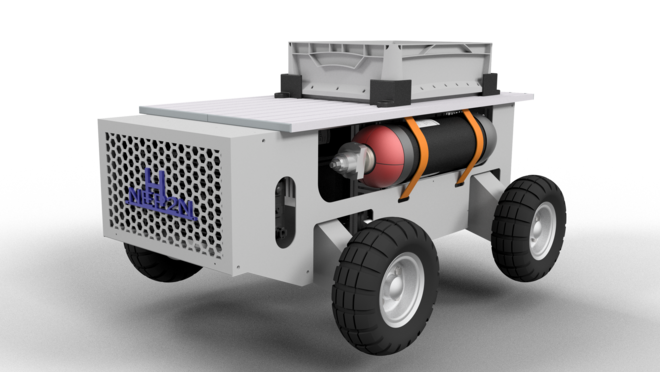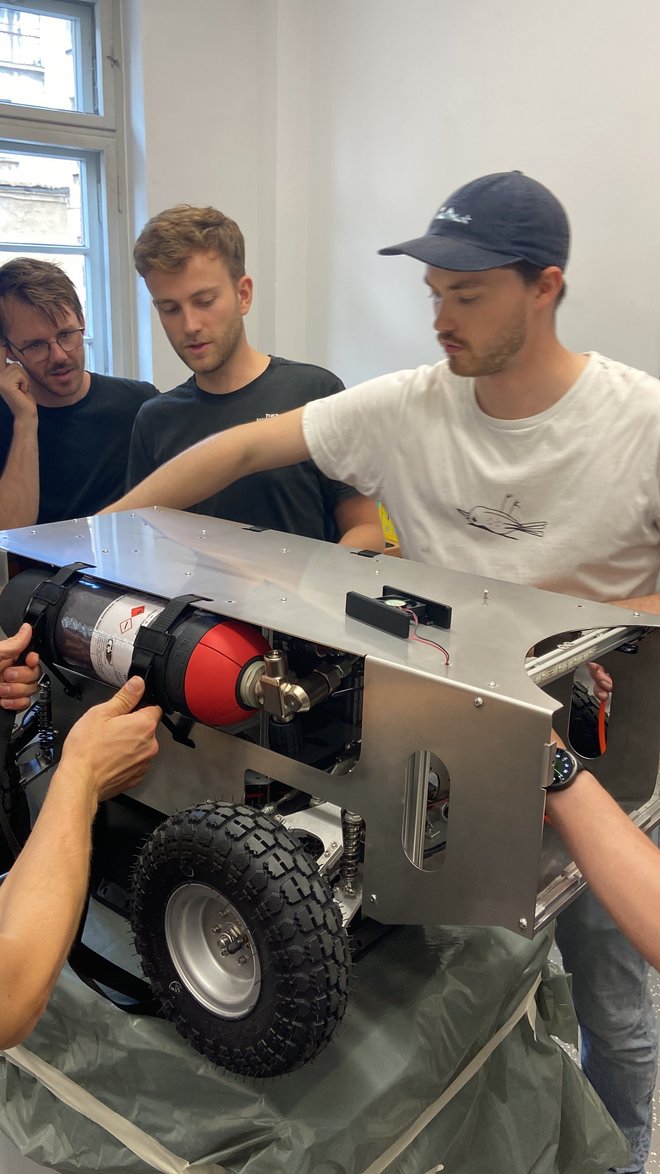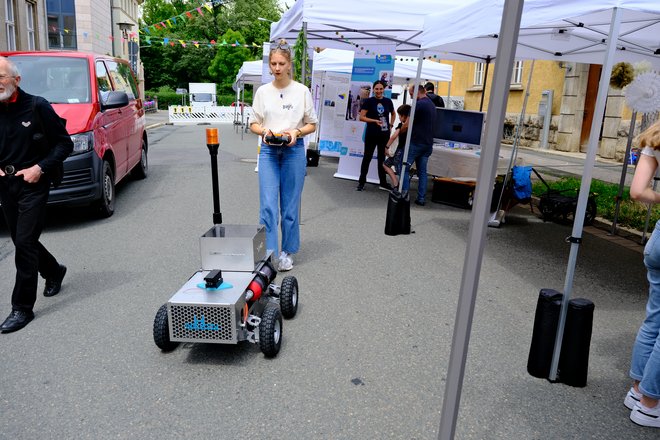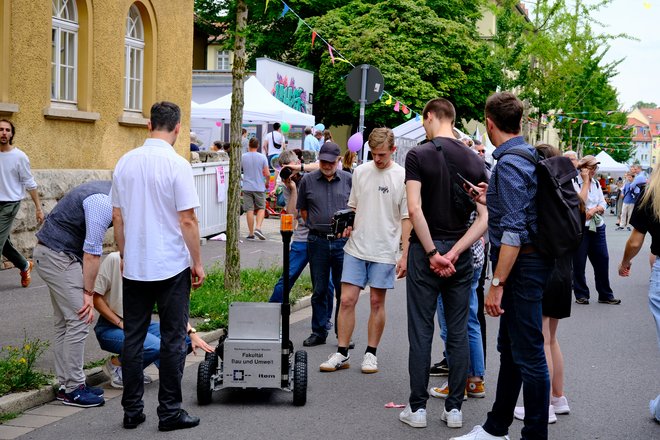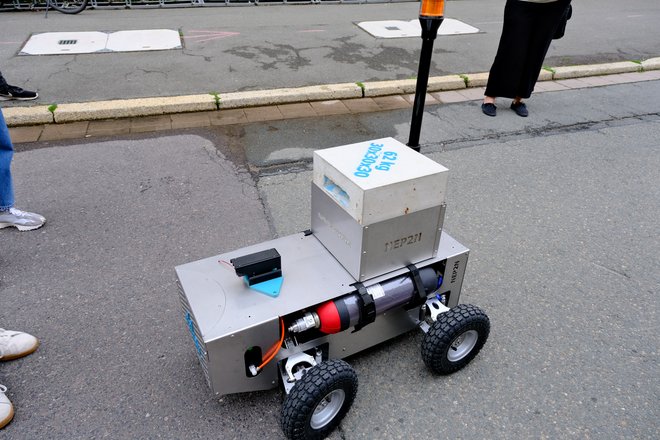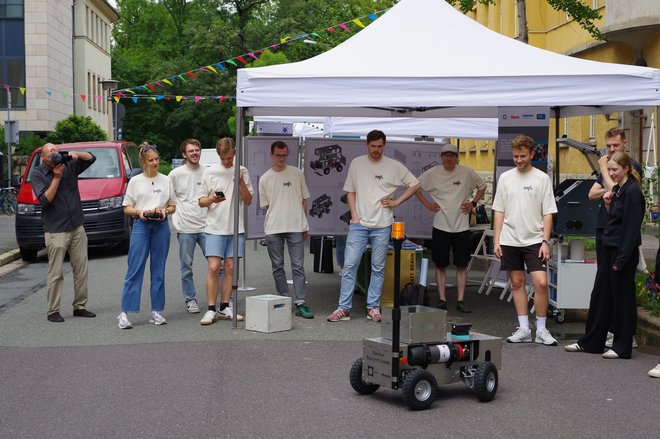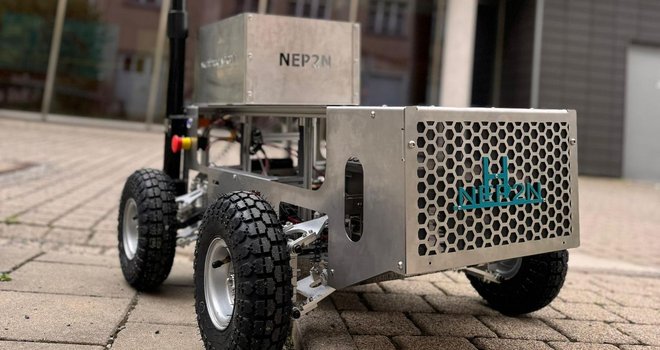
NEP2N - The H2 fuel cell model vehicle
NEP2N - This name comes from Neptune, known as the Roman god and ruler of the seas, after whom a planet in our solar system was named. But what does that have to do with this project?
NEP2N is a hydrogen-powered robotic platform - Neptune consists of around 80% hydrogen. The model vehicle was created as part of a practical project in the Master's degree course in Environmental Engineering. In the summer semester of 2024, six students specializing in energy systems worked on the development of NEP2N.
Objective
The aim of the project was to develop a concept for a fuel cell hybrid drive. This involved project planning, calculations, dimensioning, procurement and assembly of the components required for the model vehicle. The constructive planning was developed with Autodesk Inventor in order to be able to guarantee the practical implementation in our own production later on. This included electrical engineering in particular, but also metal construction and 3D printing. In order to secure funding for the project, the acquisition of sponsors was also part of the task. At the annual semester show summaery, the model vehicle was expected to be able to transport a concrete cube with an edge length of 10 cm 100 m through Coudraystraße.
Challenges
NEP2N is designed to help develop innovative solutions to the challenges of sustainable and renewable energy. It has been specially designed for outdoor use and, thanks to the use of green hydrogen from the region, has a long service life and a lower weight compared to battery-powered systems.
Implementation in practice
With a size of around 80 x 50 cm, NEP2N emits less noise and is climate-neutral compared to a battery-powered system. The idea is that NEP2N can be used, for example, in agriculture, mining, transportation, pipe inspections or rescue missions.
At the end of the semester, NEP2N drove around between the various exhibition tents at the big street festival at SCIENCE MILE Q3 on July 12, 2024. Instead of the planned concrete cube with an edge length of 10 cm, it transported drinks, an 8 kg concrete cube with an edge length of 15 cm and a 62 kg concrete cube with an edge length of 30 cm. This meant that the challenge was not only met on time for the deadline, but even exceeded.
The hydrogen for the operation of NEP2N was sourced green and regionally from Lichtenfels, around 150 km away on the Bavarian border with Thuringia, and the project team was supported in the production of the housing by the Weimar-based steel and mechanical engineering company WEIMAR-WERK GMBH. The group worked together with item industrietechnik GmbH to design the frame. The project was financially supported by the Faculty of Civil and Environmental Engineering.
Staying up to date at all times
This semester, the project successfully contributed to anchoring hydrogen topics in teaching and was thus part of the h2-well Strategy Management. NEP2N and the students are now taking a summer break - but the project will be developed further in subsequent semesters. Still not enough of the project? You can follow the project on the Instagram account @nep2n.bauhaus and the LinkedIn profile of h2-well!
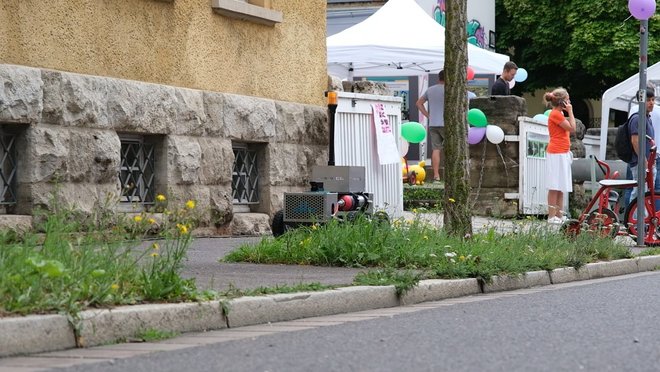
NEP2N
from h2-well
Click the Play button to load and view external content from Vimeo.com.
Automatically load and view external content from Vimeo.com (You can change this setting at any time via our »Data protection policy«.)

